Fire Bubbles - The Methane Mamba
When is the last time you made bubbles catch on fire? Probably never . . . but then again, this is the teachers-only section of […]
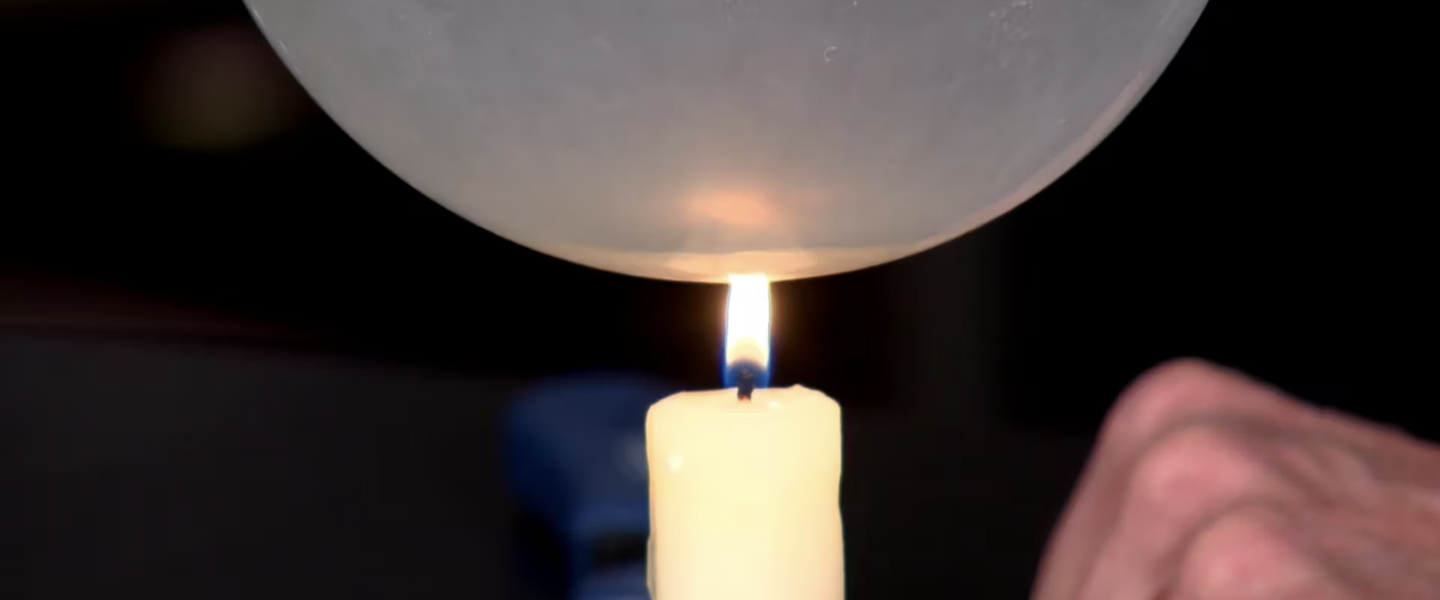
Common sense tells you that it’s impossible to boil water in a paper bag, but this classic parlor trick was a favorite of Victorian magicians. The real difficulty in performing this effect is making it look harder than it is! As you might imagine, the secret lies in yet another amazing property of water – its ability to conduct heat. Instead of using a paper bag, this modern day version of the demonstration uses an ordinary balloon, some water, and a candle. It’s a combination that’s guaranteed to make people stand back.
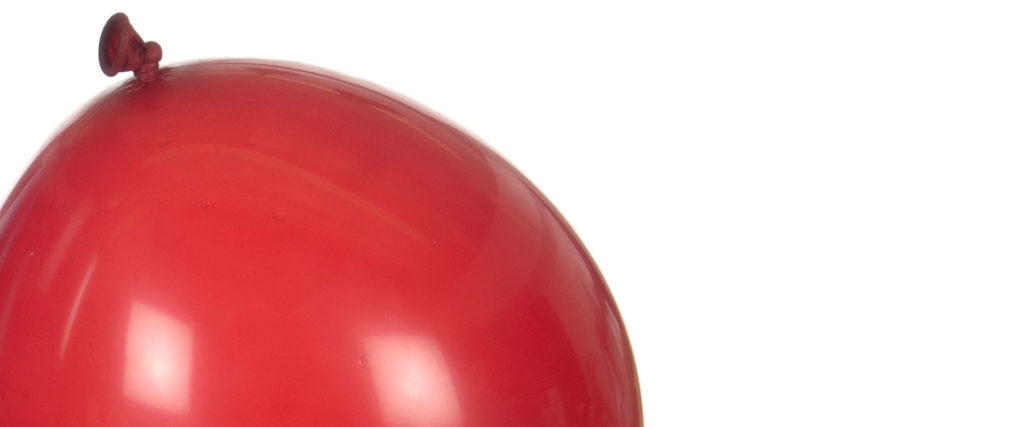
Blow up a balloon just as you normally would and tie it off.

Light a candle and place it in the middle of the table.

Put on your safety glasses because it’s time to pop the balloon. Hold the balloon a foot or two over the top of the flame and slowly move the balloon closer and closer to the flame until it pops. You’ll notice that the flame doesn’t have to even touch the balloon and the balloon pops. Let’s just say you had to prove what you already know.
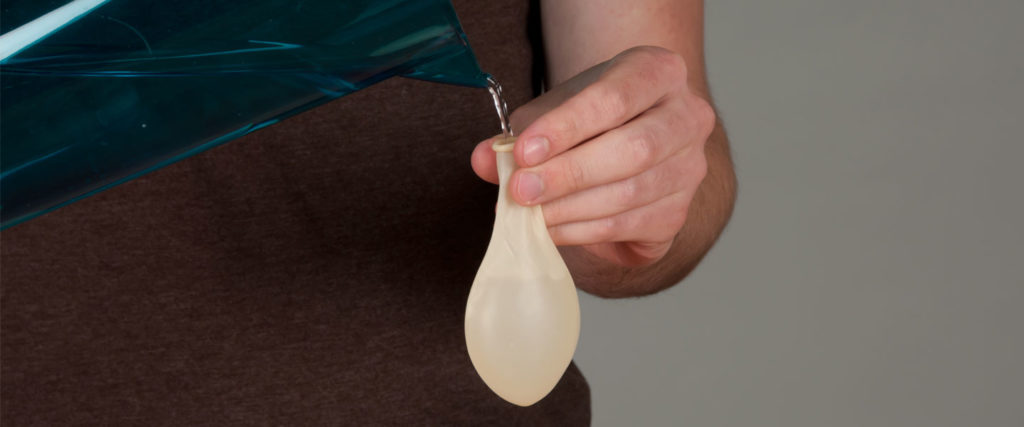
Let’s repeat the experiment, but this time the bottom of the balloon will have a layer of water inside.
Fill the balloon to the top with water—it probably holds a few ounces (that’s 60 mL for you scientists out there)—and then blow it up with air. If you accidentally let go of the balloon before you tie it off,
you’ll spray yourself, and your friends
will love it. Just tie off the balloon and get ready for the next step.
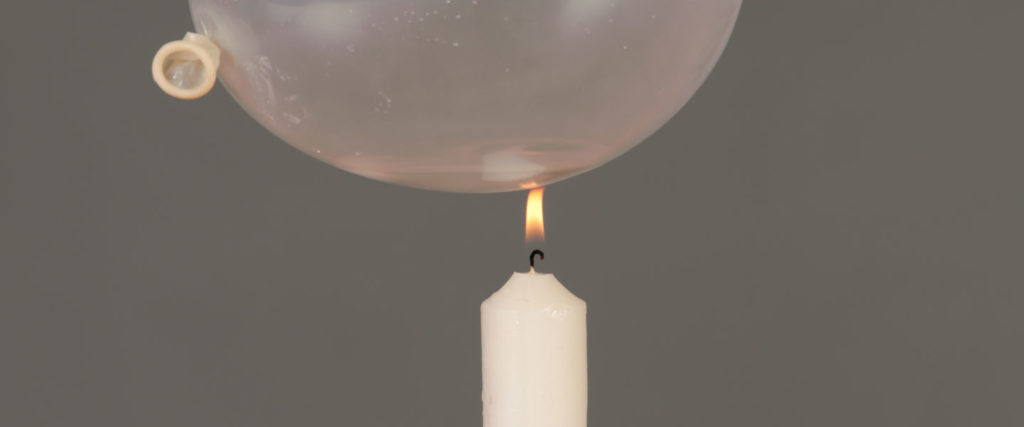
Hold the water-filled balloon at the top while you slowly lower it over the candle and watch as people start to run. Everyone knows that it’s going to pop, but for some strange reason it doesn’t. If you’re very brave, you can actually allow the flame to touch the bottom of the balloon, but it still doesn’t pop.
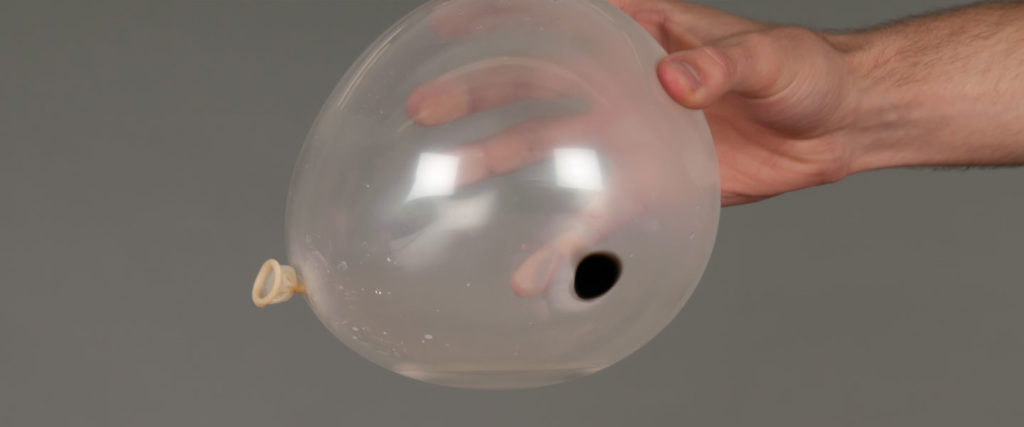
Remove the balloon from the heat and carefully examine the soot on the bottom. Yes, there’s soot, yet the balloon didn’t pop. Before reading the explanation, try to figure out why the layer of water kept the balloon from popping.
Water is a great substance for soaking up heat. The thin balloon allows the heat to pass through very quickly and warm the water. As the water closest to the flame heats up, it begins to rise and cooler water replaces it at the bottom of the balloon. This cooler water then soaks up more heat and the process repeats itself.
In fact, the exchange of water happens so often that it keeps the balloon from popping . . . until the heat of the flame is greater than the water’s ability to conduct heat away from the thin balloon and the balloon pops. But watch out! If you turn the balloon so that the candle flame is close to the side of the water balloon, the balloon will pop because the water is not conducting the heat away from the surface of the balloon. At least the water will help put out the fire!
The soot on the bottom of the balloon is actually carbon. The carbon was deposited on the balloon by the flame, and the balloon itself remains undamaged.
WARNING! This science activity uses matches, which means you need to find a very cool supervising adult to help with this experiment.
Using water to control heat is a valuable process. Special superabsorbent polymer foams are currently being used by firefighters as a way to help protect homes from being consumed by a raging forest fire. The water-absorbing polymer foam is similar to the superabsorbent polymer found in a baby diaper. The foam is applied like shaving cream to the outside of the house. As the fire burns closer and closer to the home, the water-filled foam absorbs heat energy from the fire and buys firefighters some extra time as they try to fight the flames with water.
Your body even uses water to control heat. When you exercise, your body produces sweat in an attempt to regulate your temperature so you don’t get overheated. As the sweat evaporates, it takes heat energy with it, leaving cooler skin behind.